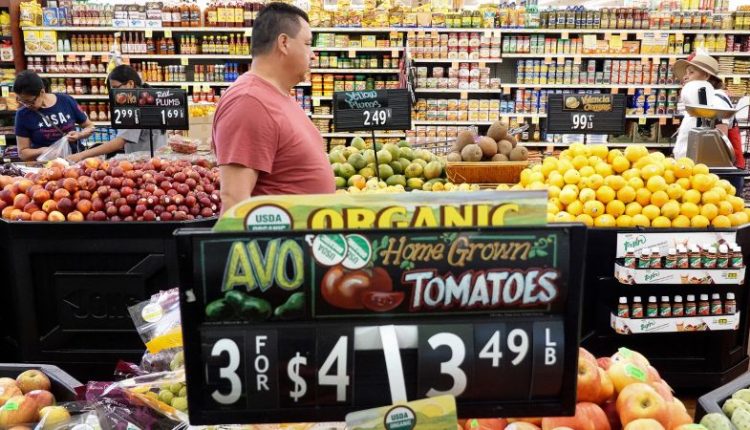Persistently high inflation took a toll on Americans’ attitudes this month as many began to pay back student loans following a three-year hiatus.
The University of Michigan’s consumer sentiment index fell 7% in October from the prior month, according to a preliminary reading released Friday. Sentiment in October was gloomy by historical standards, but well above the all-time low recorded in June 2022 when inflation was at a four-decade high.
“Nearly all demographic groups posted setbacks in sentiment, reflecting the continued weight of high prices,” said Joanne Hsu, director of the university’s Surveys of Consumers, in a release.
Americans’ moods toward the economy are influenced by current events, including the recently unfolding war between Israel and Hamas, a spike in bond yields and the stalled selection of a new congressional leader.
“There are lots of other headlines that might be worrying consumers,” wrote Bill Adams, chief economist at Comerica Bank, in an analyst note Friday. “The impasse over the next House Speaker could be adding to fears of a government shutdown in November; the UAW strike; the restart of student loan payments; and the recent uptick in long-term interest rates could be affecting sentiment, too.”
Overall inflation has picked up in recent months due to higher oil prices, which pushed up retail gasoline prices. The Consumer Price Index rose 3.7% in September from a year earlier, slightly hotter than economists’ expectations, as higher gasoline and rents kept prices elevated.
US consumers are extremely sensitive to changes in gas prices, but after a late-summer surge, the pain at the pump has eased recently. Easing gas prices could bode well for Americans already dealing with higher borrowing costs and inflation in other areas such as housing. But that could change depending on the trajectory of the Israel-Gaza conflict.
Investors are currently pricing in some geopolitical risk, focusing on how tensions between Israel and its arch-enemy Iran play out. If a clear link to Iran emerges, analysts say, some kind of an intervention by the United States cannot be ruled out. That would likely entail tighter enforcement of existing sanctions on Iran’s oil exports, which could compromise current flows to the global oil market.
“The tremendous degree of uncertainty around the Israel-Hamas war means it’s very difficult to predict the potential economic fallout,” wrote Gregory Daco, chief economist at EY-Parthenon, in a statement provided to CNN.
A scenario in which the conflict broadens to include involvement from Iran and spillovers into Lebanon and Syria wouldn’t necessarily be of grave consequence for the United States, however.
“The inflation and growth consequences for the region and the rest of the world would likely be more significant than for the US,” Daco said. “A risk-off environment with falling yields and stock prices and rising volatility would further weigh on economic activity globally.”
He added that “a surge in oil prices in the current economic environment would likely lead to more demand destruction than in 2022 when the economy was fiscally stimulated.”
The survey’s index of personal finances plunged about 15%, “primarily on a substantial increase in concerns over inflation,” according to the release. October marks the first month of Americans paying back their student loans since the pandemic-related pause.
The pause gave relief to more than 43 million Americans who have student loans, with the vast majority owing less than $40,000 and nearly one-third owing less than $10,000. The resumption of student loan payments isn’t expected to have a major macroeconomic impact, but US consumers with student debt will still have to factor those payments in to their budgets.
The average monthly student loan payment is between $210 and $314, according to Wells Fargo.
Expectations for inflation in the year ahead rose to 3.8% this month from 3.2% in September, “the highest since May 2023” and “well above the 2.3-3.0% range seen in the two years prior to the pandemic,” according to the university. Expectations can worsen, the longer inflation remains elevated, so the upward pressure from higher gas prices on headline inflation can make Americans more pessimistic about inflation.
Federal Reserve officials pay close attention to longer-run inflation expectations. Americans’ outlook for inflation rates in the next five to 10 years edged up to 3% in October from 2.8% in September.
Minutes from the Fed’s policymaking meeting in September — when officials voted to hold rates at a 22-year high — said that “inflation expectations appeared to remain very well anchored.”
Read the full article here

